Abstract
The Salmonella Arizona subgroup contains gram-negative enteric bacteria that are closely related to other salmonellae biochemically, serologically, and genetically. Although the Arizona subgroup may be isolated from a wide variety of nonhuman and human sources, the arizonae are uncommonly recognized as human pathogens, and surprisingly little is known about their epidemiology. From 1967 through 1976, the Centers for Disease Control received 858 Arizona subgroup cultures from human and nonhuman sources representing 143 different serotypes in 33 somatic groups; several serotypes had not been previously reported. The 374 cultures from humans represent 71 different serotypes; extraintestinal isolates were present in 31 (44%) serotypes. Compared with data from a previous 20 years of surveillance, the proportion of Arizona subgroup strains isolated from stools, blood, and other sites was remarkably stable, but several serotypes showed marked changes in their frequency of isolation. In total, the ratio of extraintestinal to intestinal isolates was 0.37, but marked serotype-specific variation was noted, suggesting differences in virulence associated with serotype.
Full text
PDF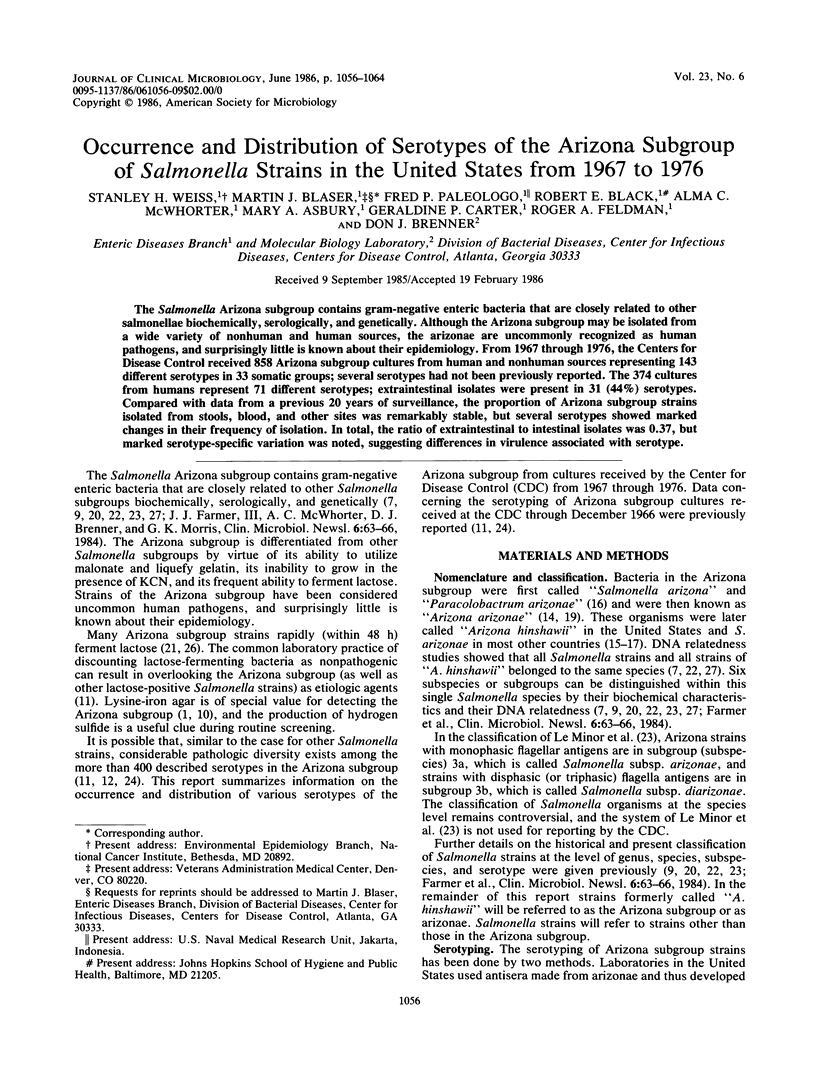
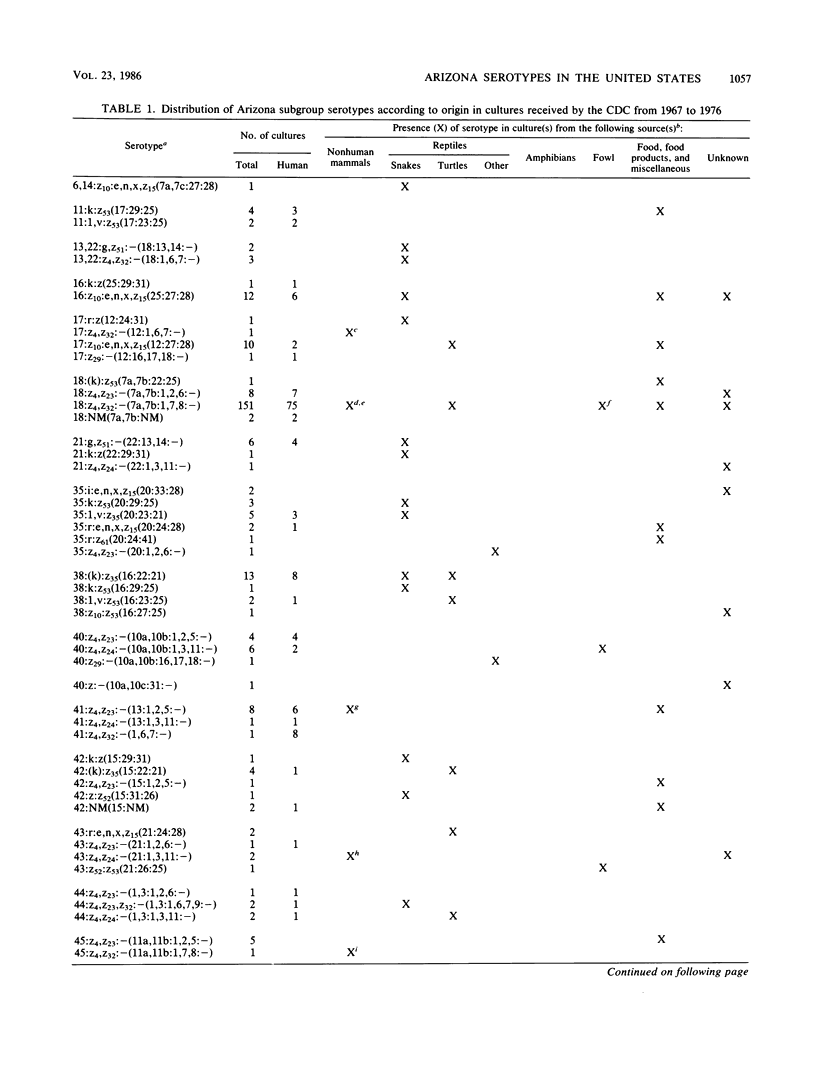
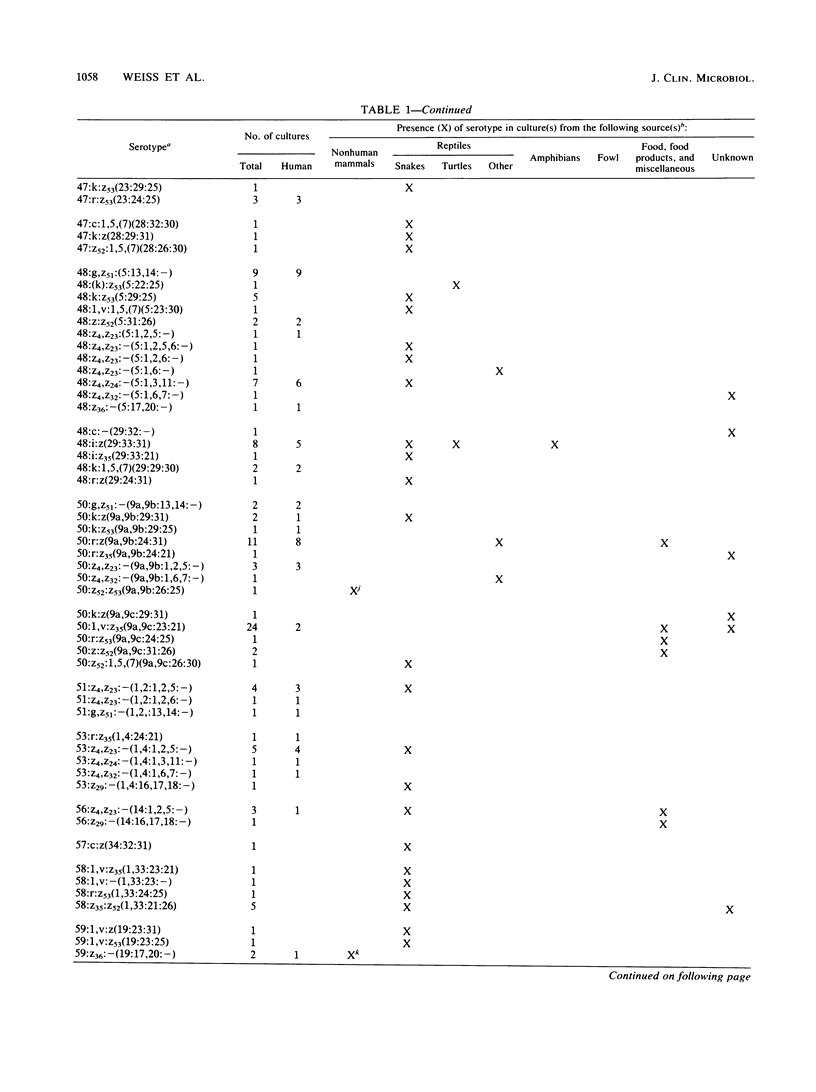
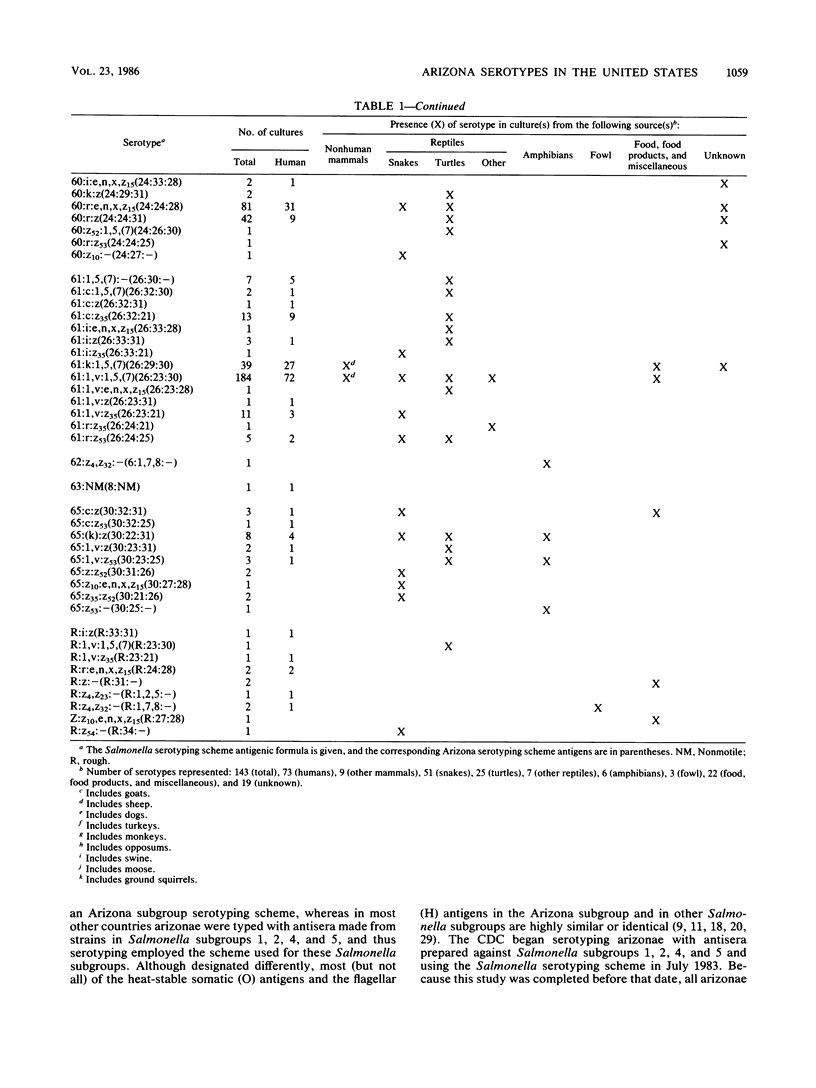
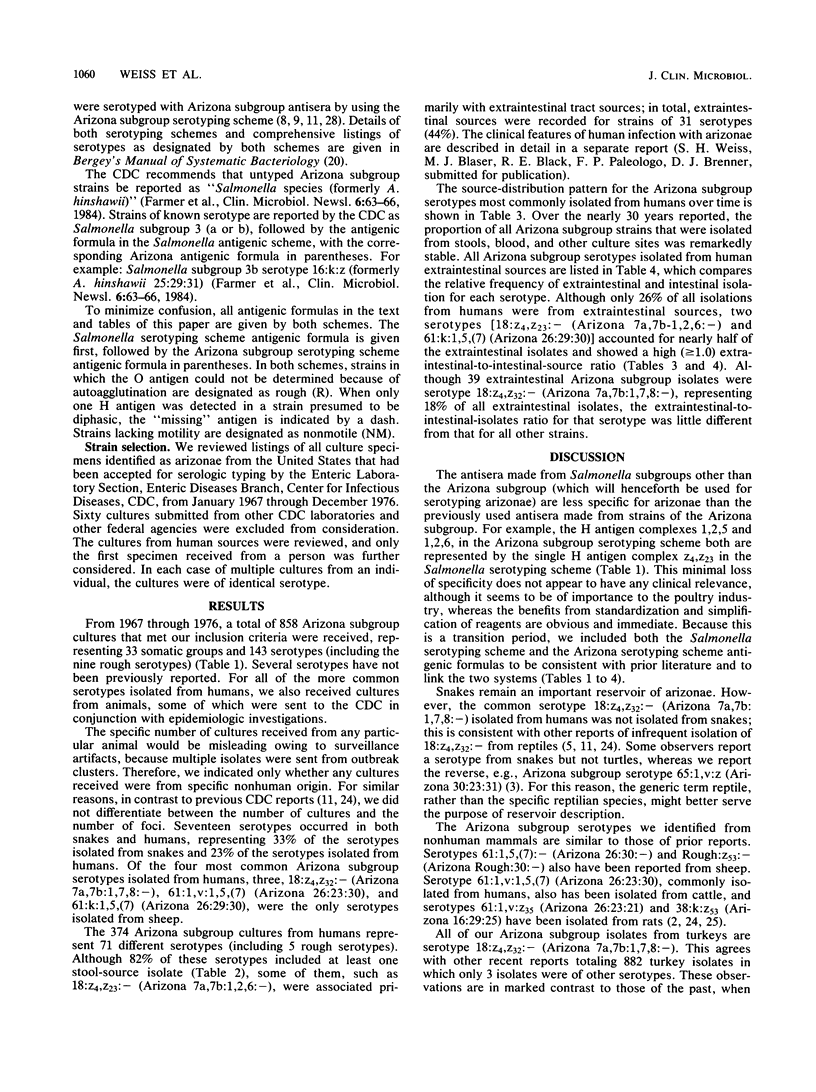
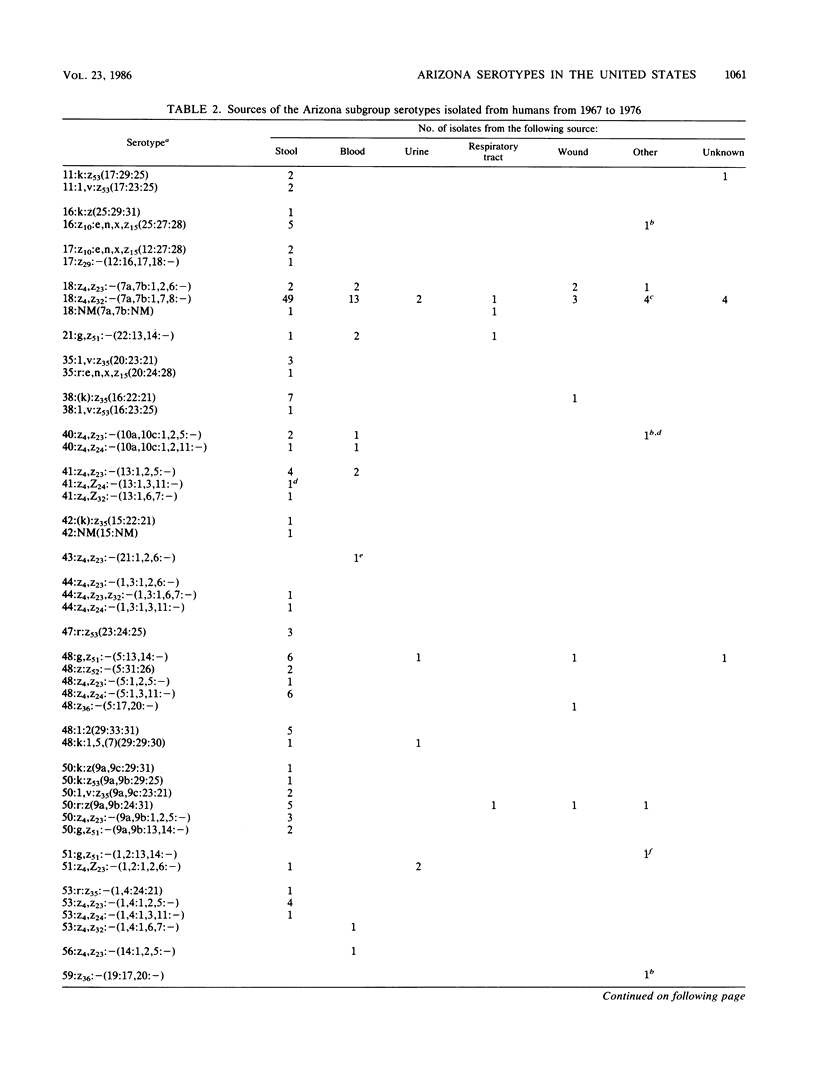
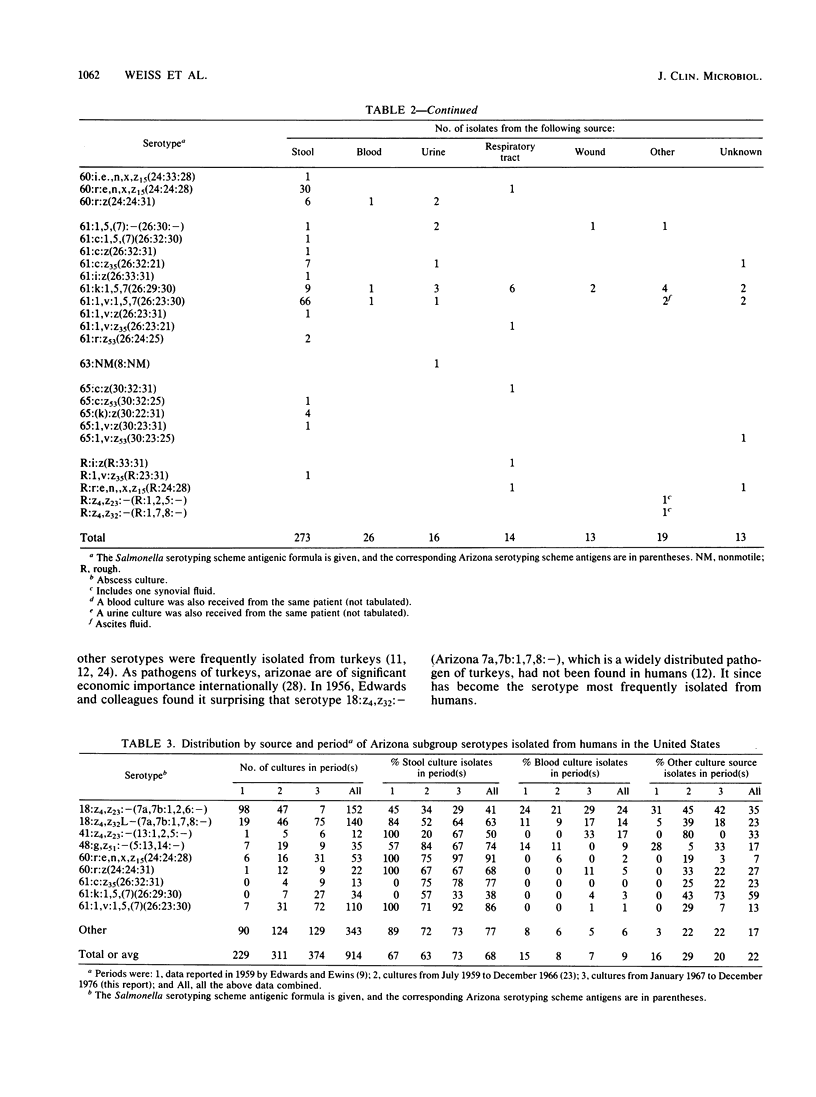
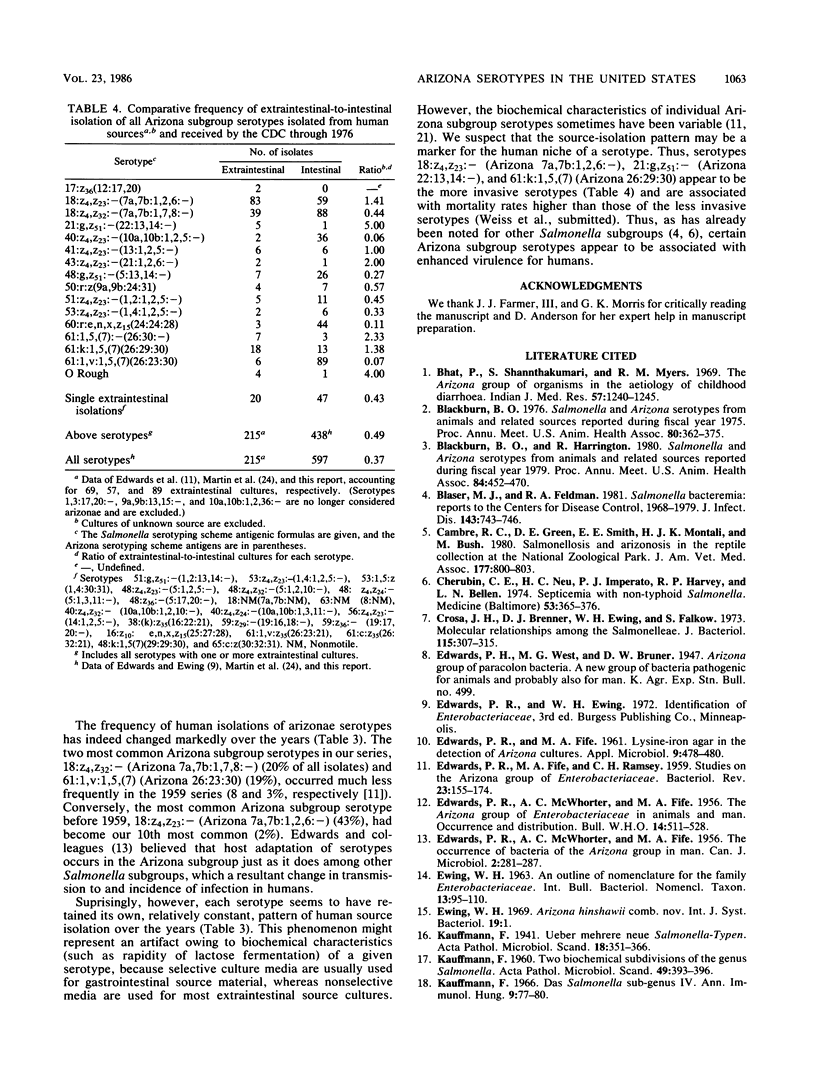
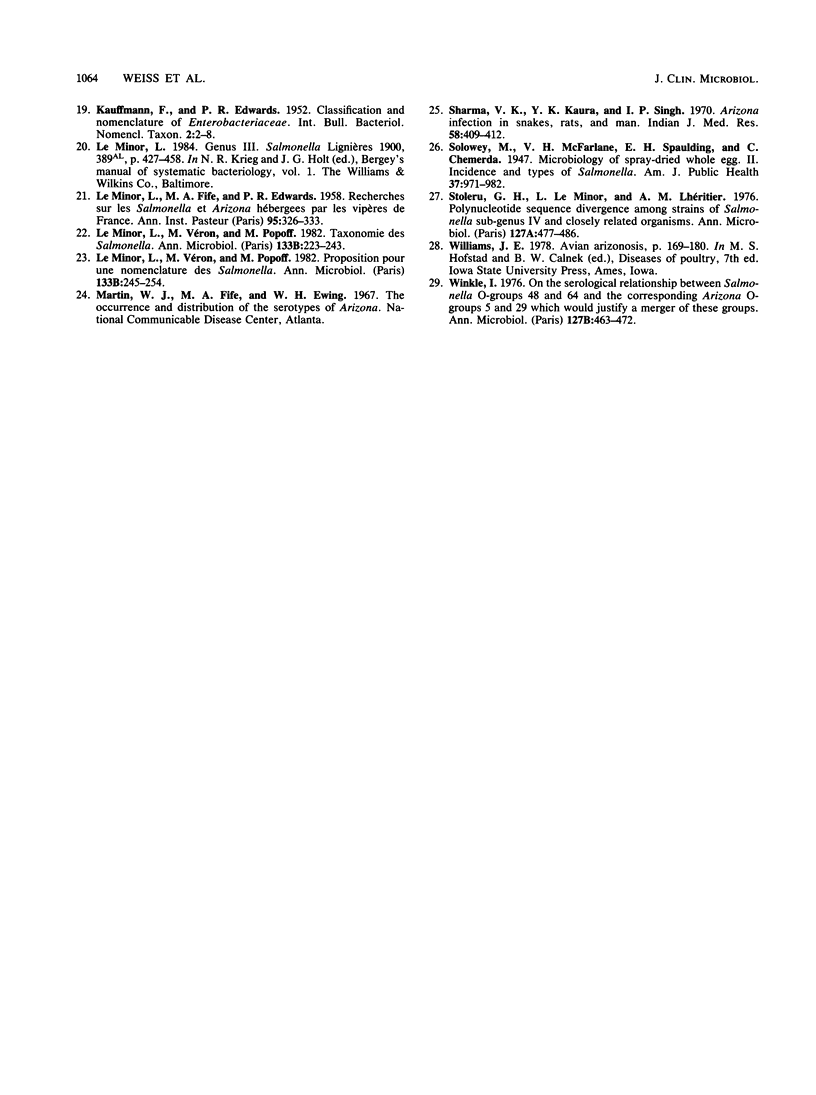
Selected References
These references are in PubMed. This may not be the complete list of references from this article.
- Bhat P., Shanthakumari S., Myers R. M. The Arizona group of organisms in the aetiology of childhood diarrhoea. Indian J Med Res. 1969 Jul;57(7):1240–1245. [PubMed] [Google Scholar]
- Blackburn B. O., Harrington R., Jr Salmonella and arizona serotypes from animals and related sources reported during fiscal year 1979. Proc Annu Meet U S Anim Health Assoc. 1980;84:452–470. [PubMed] [Google Scholar]
- Blackburn B. O. Salmonella and Arizona serotypes from animals and related sources reported during fiscal year 1975. Proc Annu Meet U S Anim Health Assoc. 1976;(80):362–375. [PubMed] [Google Scholar]
- Blaser M. J., Feldman R. A. From the centers for disease control. Salmonella bacteremia: reports to the Centers for Disease Control, 1968-1979. J Infect Dis. 1981 May;143(5):743–746. doi: 10.1093/infdis/143.5.743. [DOI] [PubMed] [Google Scholar]
- Cambre R. C., Green D. E., Smith E. E., Montali R. J., Bush M. Salmonellosis and arizonosis in the reptile collection at the National Zoological Park. J Am Vet Med Assoc. 1980 Nov 1;177(9):800–803. [PubMed] [Google Scholar]
- Cherubin C. E., Neu H. C., Imperato P. J., Harvey R. P., Bellen N. Septicemia with non-typhoid salmonella. Medicine (Baltimore) 1974 Sep;53(5):365–376. doi: 10.1097/00005792-197409000-00003. [DOI] [PubMed] [Google Scholar]
- Crosa J. H., Brenner D. J., Ewing W. H., Falkow S. Molecular relationships among the Salmonelleae. J Bacteriol. 1973 Jul;115(1):307–315. doi: 10.1128/jb.115.1.307-315.1973. [DOI] [PMC free article] [PubMed] [Google Scholar]
- EDWARDS P. R., FIFE M. A. Lysine-iron agar in the detection of Arizona cultures. Appl Microbiol. 1961 Nov;9:478–480. doi: 10.1128/am.9.6.478-480.1961. [DOI] [PMC free article] [PubMed] [Google Scholar]
- EDWARDS P. R., FIFE M. A., RAMSEY C. H. Studies on the Arizona group of Enterobacteriaceae. Bacteriol Rev. 1959 Dec;23(4):155–174. doi: 10.1128/br.23.4.155-174.1959. [DOI] [PMC free article] [PubMed] [Google Scholar]
- EDWARDS P. R., MCWHORTER A. C., FIFE M. A. The Arizona group of enterobacteriaceae in animals and man; occurrence and distribution. Bull World Health Organ. 1956;14(3):511–528. [PMC free article] [PubMed] [Google Scholar]
- EDWARDS P. R., MCWHORTER A. C., FIFE M. A. The occurrence of bacteria of the Arizona group in man. Can J Microbiol. 1956 May;2(3):281–287. doi: 10.1139/m56-032. [DOI] [PubMed] [Google Scholar]
- KAUFFMANN F. Two biochemical sub-divisions of the genus Salmonella. Acta Pathol Microbiol Scand. 1960;49:393–396. doi: 10.1111/j.1699-0463.1960.tb01150.x. [DOI] [PubMed] [Google Scholar]
- LE MINOR L., FIFE M. A., EDWARDS P. R. Recherches sur les Salmonella et Arizona hébergées par les vipères de France. Ann Inst Pasteur (Paris) 1958 Sep;95(3):326–333. [PubMed] [Google Scholar]
- Le Minor L., Véron M., Popoff M. Proposition pour une nomenclature des Salmonella. Ann Microbiol (Paris) 1982 Sep-Oct;133(2):245–254. [PubMed] [Google Scholar]
- Le Minor L., Véron M., Popoff M. Taxonomie des Salmonella. Ann Microbiol (Paris) 1982 Sep-Oct;133(2):223–243. [PubMed] [Google Scholar]
- Sharma V. K., Kaura Y. K., Singh I. P. Arizona infection in snakes, rats and man. Indian J Med Res. 1970 Apr;58(4):409–412. [PubMed] [Google Scholar]
- Solowey M., McFarlane V. H., Spaulding E. H., Chemerda C. Microbiology of Spray-dried Whole Egg: II. Incidence and Types of Salmonella. Am J Public Health Nations Health. 1947 Aug;37(8):971–982. [PMC free article] [PubMed] [Google Scholar]
- Stoleru G. H., Le Minor L., Lhéritier A. M. Polynucleotide sequence divergence among strains of Salmonella sub-genus IV and closely related organisms. Ann Microbiol (Paris) 1976 May-Jun;127(4):477–486. [PubMed] [Google Scholar]
- Winkle I. On the serological relationship between Salmonella O-groups 48 and 64 and the corresponding Arizona O-groups 5 and 29 which would justify a merger of these groups. Ann Microbiol (Paris) 1976 Nov-Dec;127B(4):463–472. [PubMed] [Google Scholar]


